Understanding Aggression
Aggression is a serious behavioural problem due to the high risk of injury either to an owner or to another animal.
Aggression is a normal part of the behaviour repertoire of all species, our problem is determining what is normal and ‘in context’, and what is abnormal. More often than not, anxiety is the underlying cause of many problem behaviours, including aggression. We are only now starting to really understand the important role it has, and how to recognise its less obvious manifestations.
Aggression can be considered normal dog behaviour in many contexts. Yet in other contexts the degree of aggression may be inappropriate, and the aggression sequence may not move to completion in a normal fashion. Determining what it is that is considered aggression is another factor. Obviously biting can be considered aggression, but what about growling, snarling, and physical displays of threatening behaviour? Dogs have evolved over the centuries to have quite elaborate displays which in turn prevent the need for overt fighting. This is considered a survival mechanism as animals hurt badly due to fighting, even if they are the eventual winner, may not live to pass on their genes.
Aggression can also be divided into ‘types’ of aggression such as ‘maternal aggression’, ‘pain-induced aggression’, or ‘territorial aggression’. It is important to note that aggression is merely a symptom, and is not a diagnosis in itself. The other very important thing to understand is that ‘dominance’ does not equal aggression. Many misinformed trainers will assign this terminology to a dog that is not easy to train – labelling the dog ‘dominant’ – instead of addressing the learning difficulties that the dog and handler are having. Alternately any dog showing signs of aggression is labelled as being dominant, when in fact most dogs that are resorting to using physical means are actually anxious and feel they have no other means to resolve a situation that is causing them great fear.
Unfortunately, the terminology associated with aggression has become blurred due to the moral judgements often associated with words such as ‘vicious’, ‘dangerous’, ‘nasty’. Many owners will avoid labelling their own animal with words that have very negative connotations. They may say things such as ‘he is not aggressive, he just nips me’ or ‘he gets ‘angry’ when I touch him. For this reason it is best to focus on what the dog actually did, and what its body language looked liked before, during and after the event.
The Role of Fear and Anxiety
Fear and anxiety are very similar. Fear is a normal response to situations that could threaten the health and safety of an individual. Anxiety, though is the anticipation of the event, so the thing causing the fear may not even be present, and yet the dog shows signs of fearfulness and arousal.
For example: a dog who suffers Separation Anxiety may show the classic signs of fear well before the owner actually leaves for work. The owner is still present, but the dog becomes anxious when the owner puts on their work clothes as this predicts that they will soon depart.
Anxiety is often the underlying reason for aggression. The dog is fearful in a certain context – maybe when approached by another animal or person, or in a particular location – and the body prepares for the flight or fight response. If the animal is not given an opportunity to move away to a safe distance to resolve the fear (maybe the dog is on leash then it is left with only the fight response as a defence.
Initially, most well socialised dogs will offer normal low-grade threats such as body language changes and growling, which escalate to high-grade threats as the fear-inducing object comes closer. The aim of the physical display is to ‘scare’ the object away. If there is no escape and the fear-inducing object continues to come closer, the animal will then move to active aggression in an attempt to resolve the conflict.
Unfortunately over time, if placed in the same situation repeatedly, the animal LEARNS which defences work best, and the display becomes one of learned aggression, even though the initial incident was due to fear. We now have an animal that looks very confident in its aggression, and may not show the signs of fear that were shown in initial situations.
So what can we do to prevent anxiety and fear and aggression in our pets?
All behaviours we see have three contributing components that are not exclusive of each other. The genetic predisposition ‘hard-wires’ the animal to behave within a certain range of behaviours. What the animal has or has not learnt over time also has an influence on the behaviour we see. Finally, the environment also has an influence on what behaviour we see – certain situations or places may trigger certain behaviours.
With animals that have been re-homed, there is very little you can do about the ‘genetic’ temperament as the breeding choices were made well before the new owner comes along.
You can though control what the dog learns from now on. Even dogs with a genetic tendency to being fearful can be helped by plenty of pleasant and controlled exposure to a variety of sights, sounds and experiences. Controlled and positive experiences should continue throughout life to allow the animal to habituate to ‘normal’ day to day occurrences.
It is also important to protect the pet as much as possible from unpleasant events. This may be achieved by controlling the environment, but also by watching what it is that the pet is ‘learning’. An example of this could be the off-leash park. Often owners think by going to the off-leash park they are continuing their dog’s socialisation. But if every time the dog meets other dogs it is rushed at, bullied or threatened, this will in fact be teaching the dog that other dogs are to be feared. If the owner does not recognise the inappropriate behaviour of the other dogs, soon the dog may have to defend itself as the only way to stave off the approaches of a rough or rude dog. Now we have started an aggression learning curve that we did not want.
How do owners contribute to this problem?
Often owners do a number of things that contribute to the development of problem behaviours. Sometimes it is simply not recognising the pet is anxious in the first place, and leaving it in the fearful situation. Sometimes, owners will try to solve the problem by forcing the pet into the situation deliberately and hoping ‘he will get over it’ (called flooding). The problem with this is that the pet usually becomes increasingly sensitised as it cannot escape the situation.
Some owners exacerbate the problem by using punishment, either as a direct response to the anxiety or aggression, or in training. The animal is anxious, the human does not allow it to escape, the animal behaves aggressively, and the human then punishes the animal for the aggression. In this case the punishment only adds to the anxiety that the animal feels. Poorly timed punishment is common and this works even further to confuse and concern the pet. The one person who might have helped, is now yet another cause of anxiety.
How can I tell if my pet is anxious or concerned in a particular situation?
Dogs communicate largely through subtle changes to their body language. When they are fearful or aroused, they can show this in a number of ways. Most of us can easily recognise the signs of fear – dilated pupils, shaking, cowering, panting, attempting to escape. Once there is some arousal we may also see restlessness, hyper-vigilance (visual scanning), vocalisation (whining, sooking, grizzling).
But before these obvious signs, there are a set of more subtle indicators that all is not right within the pet’s world. These indicators have been called ‘calming signals’, ‘displacement behaviours’ and ‘conflict signals’. Regardless of the ideology you agree with for interpreting them, they are there, and are a sign that the animal has changed from relaxed and calm. Signs might include licking the lips, yawning, turning the eyes, turning the head, and many dogs give a type of grimace with their brow furrowed and lips pulled back.
Greyhounds are notorious for giving a ‘freeze’ response. They just get a bit of a glazed look and do nothing. Doing nothing does not mean that they are OK. You need to look for this response and act on it the same way you would if the dog was showing more overt behaviours.
If as an owner you learn to recognise these early warning signs in your own dog and in others, you can then step in to resolve the conflict as quickly as possible. What you do depends on what is happening and what the perceived problem may be.
If the dog is indicating that the approach or interaction with another animal or person is arousing, then removing the pet from the situation and distancing the animal from the threat is the best answer. If it occurs during a training session, it may be time to switch to an easier task, or go back a few steps to a level where the animal feels more confident before working back to the goal behaviour. It might also be an idea to break from the session, take a walk, and come back when everyone is relaxed again.
If nothing is done, and the warning signs are ignored, the animal will move from mild arousal and anxiety, to a more overt fearful response – the fight, flight, freeze or fidget response and possibly the situation may escalate to aggression.
So what can we do to help reduce the likelihood of aggression?
- Avoid the triggers where we can
- Recognise the easy signs of anxiety and remove the animal or the cause from the area
- Expose dogs and young puppies to plenty of positive experiences, sights, sound and environments
- Ensure we set a consistent and fair rule structure and routine at home
- Train our dog to be calm and to settle when asked
- Do not use punishment to treat anxiety or aggression
- Do not reinforce anxious behaviour
- Seek professional help if the anxiety seems severe or does not resolve with simple intervention or where the risk of injury due to aggression is high.
If I don’t know how to handle this behaviour, who is the best person to ask for advice?
If your dog’s behaviour is a concern, your first step should be a vet check. This can help rule out a medical cause for your dog’s behaviour. If a dog is unwell, or has painful areas, they may show signs of aggression that is not their normal reaction.
Simply taking your dog to a training class will not solve the issue, unless the trainer has experience in this area, and an understanding of what the dog may need. Even if they dog have this expertise, finding the time within a class situation to properly address the issue is very difficult.
There are some trainers who may be able to help you, but generally you will need some one-on-one help. Be wary of trainers who use physical means of training or who ‘correct’ or ‘punish’ the dog to address signs of fear or aggression.
There are veterinarians who have additional training in behaviour – called ‘veterinary behaviourists’ and these are the people other vets refer cases to.
Aggressive behaviour can usually be managed and the dog can undergo behavioural modification training to improve the responses to trigger events. But it is important to consider everyone’s safety before going ahead with this sort of treatment.
Risk factors to be considered include:
- Whether or not there are children in the household
- Whether there are elderly or frail people in the household
- Whether the incidents are predictable
- Whether the triggers are easy to identify
- Whether you are committed to long term changes and have reasonable expectations
- Whether there have been any injuries inflicted – to people or other animals
If you are at all unsure, or the risk of the animal injuring another person or animal are high, I would strongly recommend that you seek advice from a Veterinary Behaviourist – NOT a dog trainer!
If your greyhound has shown signs of aggression such as growling or snapping at other dogs or people, please call the Greyhound Adoption Program Staff urgently so that they can make an initial assessment and refer you to the right place for advice.
Meet our dogs ready for adoption
All greyhounds adopted from GAP are de-sexed, vaccinated, microchipped, wormed and health checked.

Lulu ARP
You will go 'lala' over Lulu! She is stunning, puppyish and a tad shy but oh so sweet. She will show you her puppyish side once she starts to settle in and you will just fall in love. We think this pretty girl may suit living with another medium or larger male companion and maybe children 10 and over. Anice yard to relax in will be great for Lulu as well.
This dog is part of our Assisted Rehoming Program (ARP). Wehave behavioural and health assessed this lovely dog, and they will remain withtheir racing owners until they find an adoptive home, at which point they arebrought back into GAP. This means that should you be interested in adoptingthis dog, we are bringing the dog into GAP on the understanding that you willbe adopting this particular dog, and not other dogs currently in ourcare.
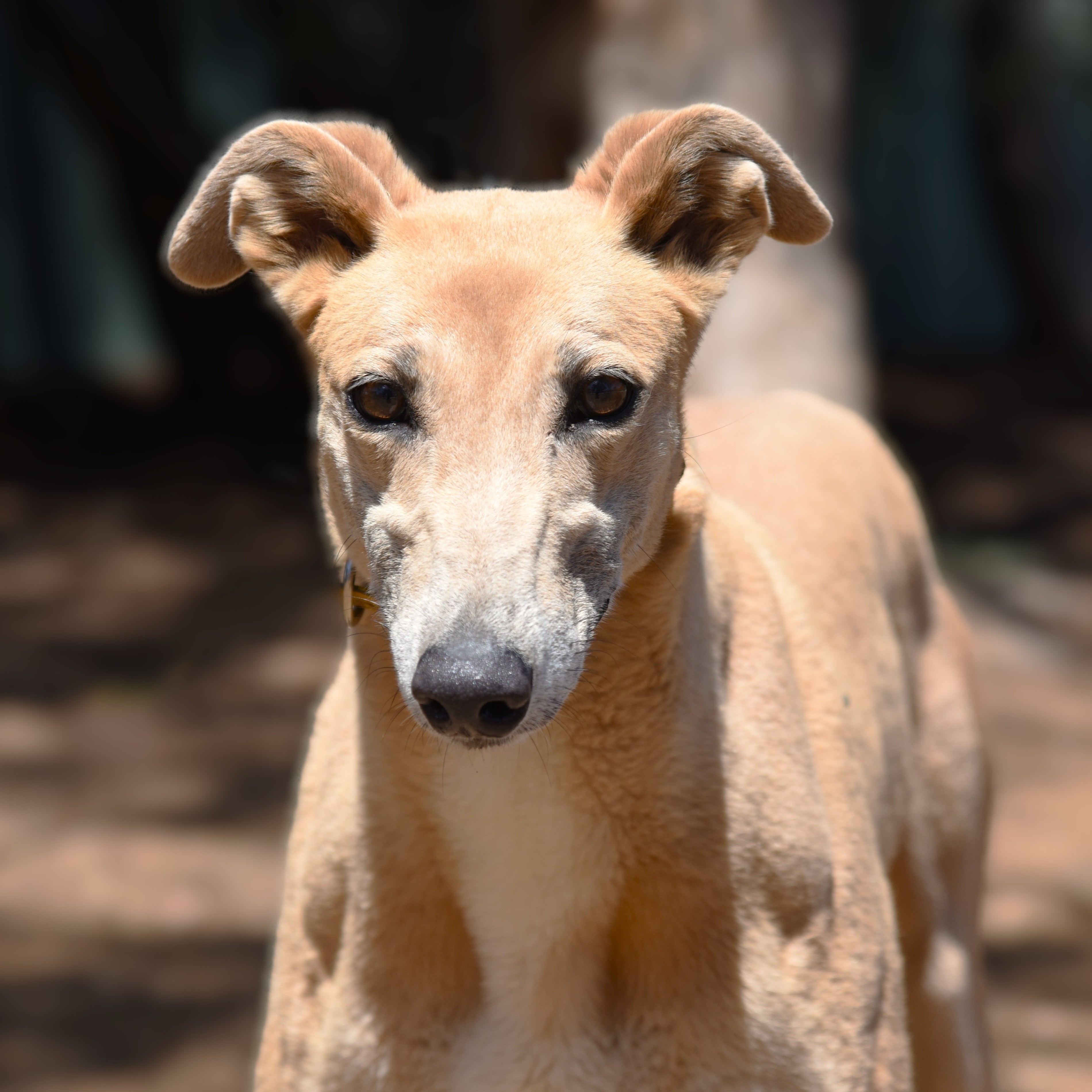
Honeybee ARP
Could you ‘bee’ any sweeter than a Honeybee? Nope! Miss Honeybee is so hoping she will find her field of flowers to call home soon. She can be a bit reserved to start with but you will soon see that sweet side ooze out of her as she settles in. She will look at you for guidance and really loves being told she is a “good girl!” so someone that is willing to give her some time and reassurance as she becomes a pet would be great. We think she may suit homes that have another calm male dog of any size and older children that will give her space to adjust.
This dog is part of our Assisted Rehoming Program (ARP). We have behavioural and health assessed this lovely dog, and they will remain with their racing owners until they find an adoptive home, at which point they are brought back into GAP. This means that should you be interested in adopting this dog, we are bringing the dog into GAP on the understanding that you will be adopting this particular dog, and not other dogs currently in our care.
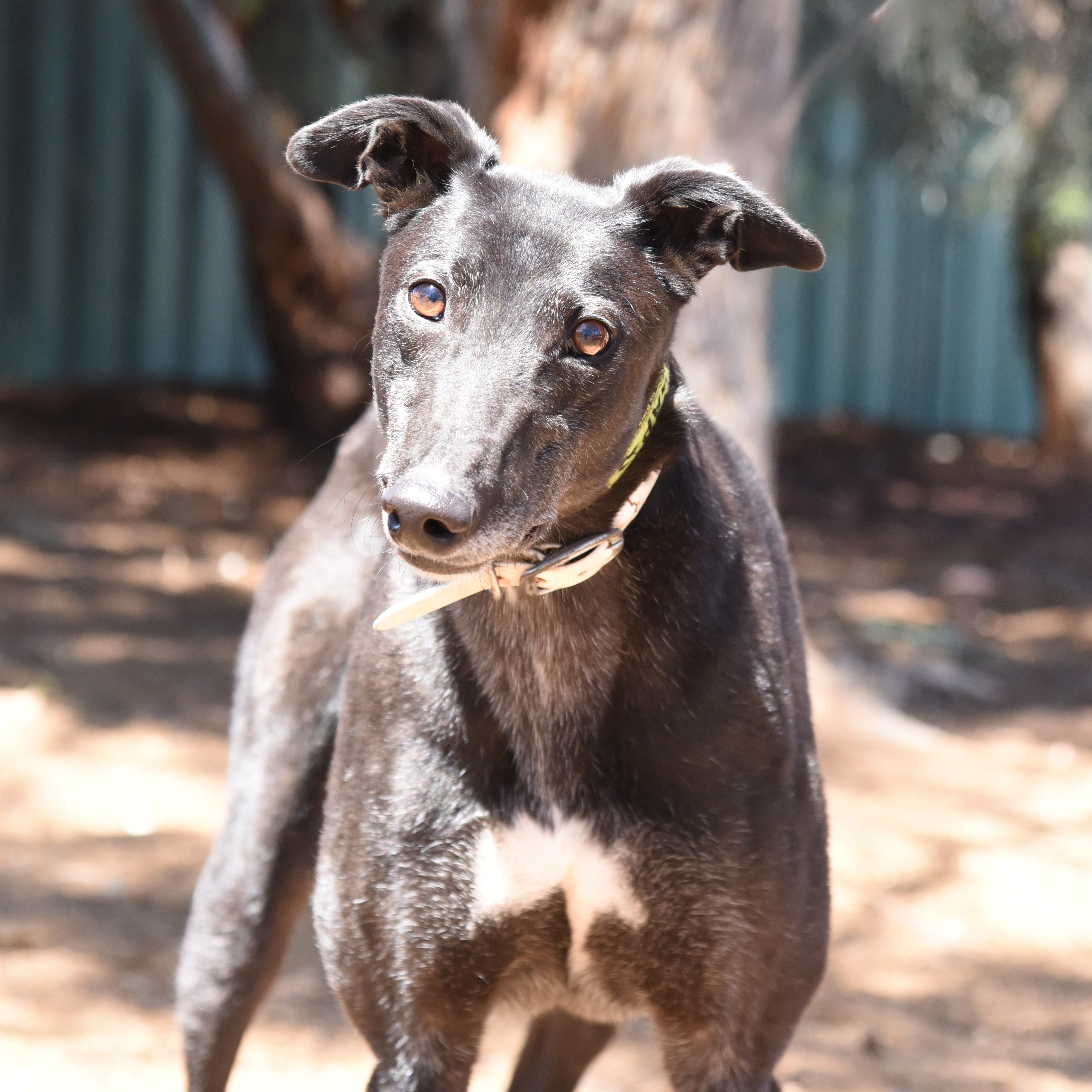
Ernie ARP
Are you looking for an Ernie to your Bert? A new bestie to go on adventures with? Well look no further because this handsome young man is ready to become your best mate. Ernie is a stunning, shiny boy that is super friendly, outgoing and affectionate. He likes to live an active lifestyle so someone that’s looking for a friend to join you exploring places look no further! Ernie may suit living with children 5 and over and with another medium or larger canine buddy, he would very much like a yard to play in as well.
This dog is part of our Assisted Rehoming Program (ARP). We have behavioural and health assessed this lovely dog, and they will remain with their racing owners until they find an adoptive home, at which point they are brought back into GAP. This means that should you be interested in adopting this dog, we are bringing the dog into GAP on the understanding that you will be adopting this particular dog, and not other dogs currently in our care.

Yvonne ARP
Yvonne is just the happiest girl who is full of personality! She will look at you with those stunning gooey caramel eyes and wag that tail till she gets more pats and loving. Check out her hilarious “mid shake” photo! We think she may suit children 5 and over and another medium or larger male companion. She may also suit living in an apartment type setting!
This dog is part of our Assisted Rehoming Program (ARP). We have behavioural and health assessed this lovely dog, and they will remain with their racing owners until they find an adoptive home, at which point they are brought back into GAP. This means that should you be interested in adopting this dog, we are bringing the dog into GAP on the understanding that you will be adopting this particular dog, and not other dogs currently in our care.
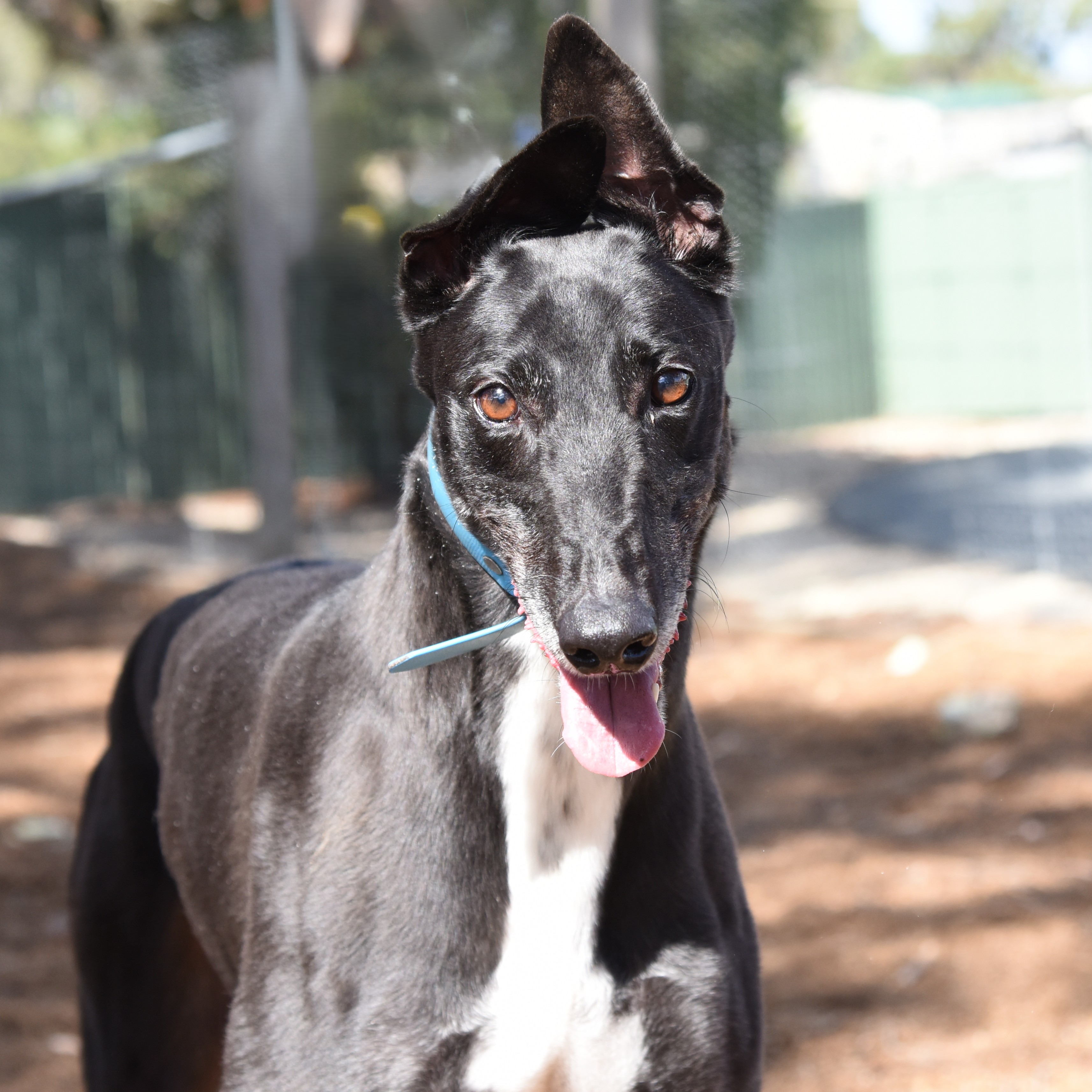
Mr D ARP
Hi! I’m Mr D! What’s that you say!? I’m handsome? Well, there is so much more to love about me than my handsome looks but ill point out my shiny coat, awesome pointy ears and a tail that winds up like a helicopter but most importantly I am a real sweet, friendly and fun boy that is always up for an adventure. I think I might be ok to live with children 10 and over or maybe even another medium or larger play buddy!
This dog is part of our Assisted Rehoming Program (ARP).We have behavioural and health assessed this lovely dog, and they will remain with their racing owners until they find an adoptive home, at which point they are brought back into GAP. This means that should you be interested in adopting this dog, we are bringing the dog into GAP on the understanding that you will be adopting this particular dog, and not other dogs currently in our care.
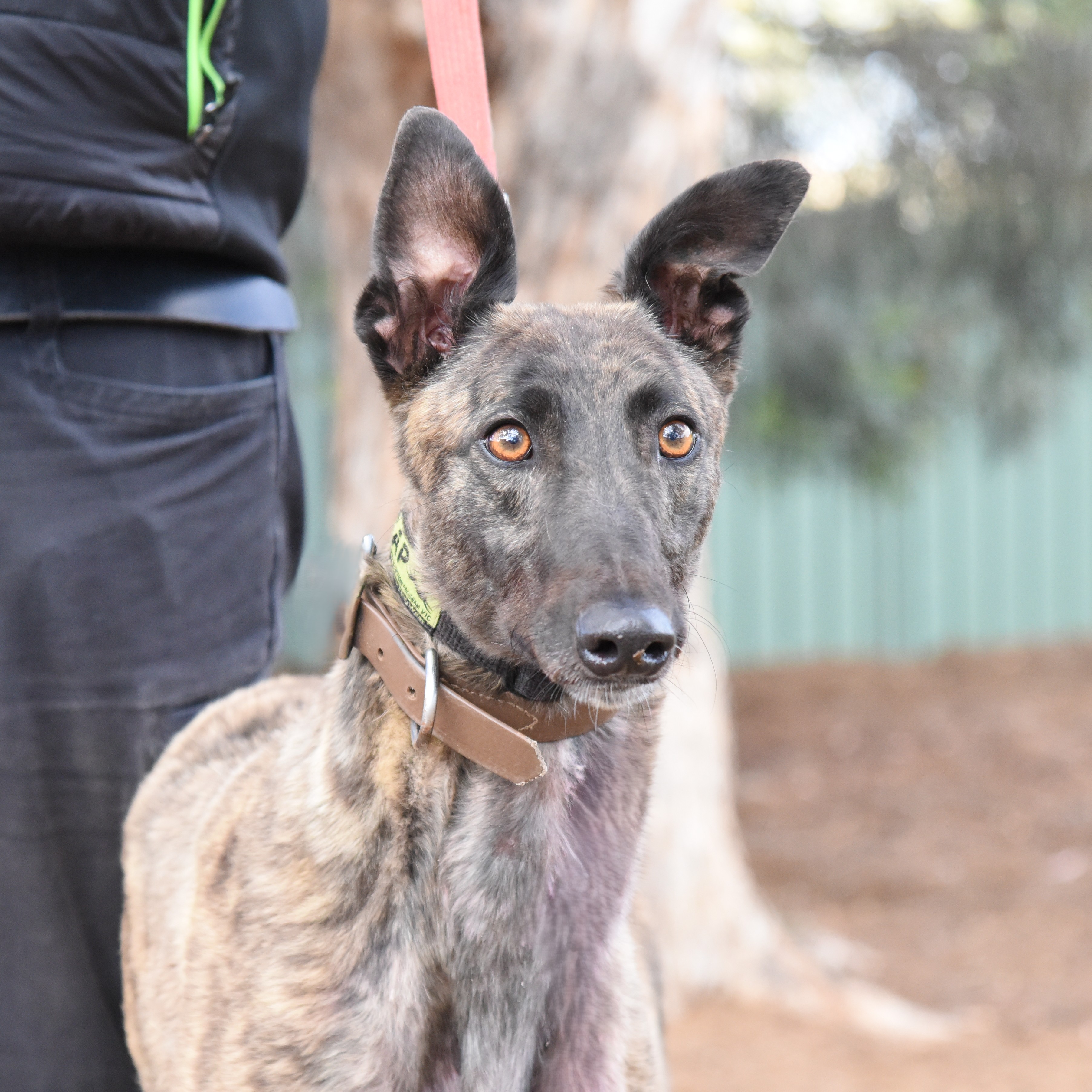
Kim ARP
This stunning girl is a real leaner! She will lean on you for pats any opportunity she gets and we are all here for it. This cutie is a quiet and gentle girl that can sometimes be a little shy but she tries her hardest. We think she may thrive in a home that has a bit of a yard to play in and children 10 and over that will love to play with her but also happy to give her space when she wants to just chill. She may also be ok living with another male canine companion of any size.
This dog is part of our Assisted Rehoming Program (ARP).We have behavioural and health assessed this lovely dog, and they will remain with their racing owners until they find an adoptive home, at which point they are brought back into GAP. This means that should you be interested in adopting this dog, we are bringing the dog into GAP on the understanding that you will be adopting this particular dog, and not other dogs currently in our care.
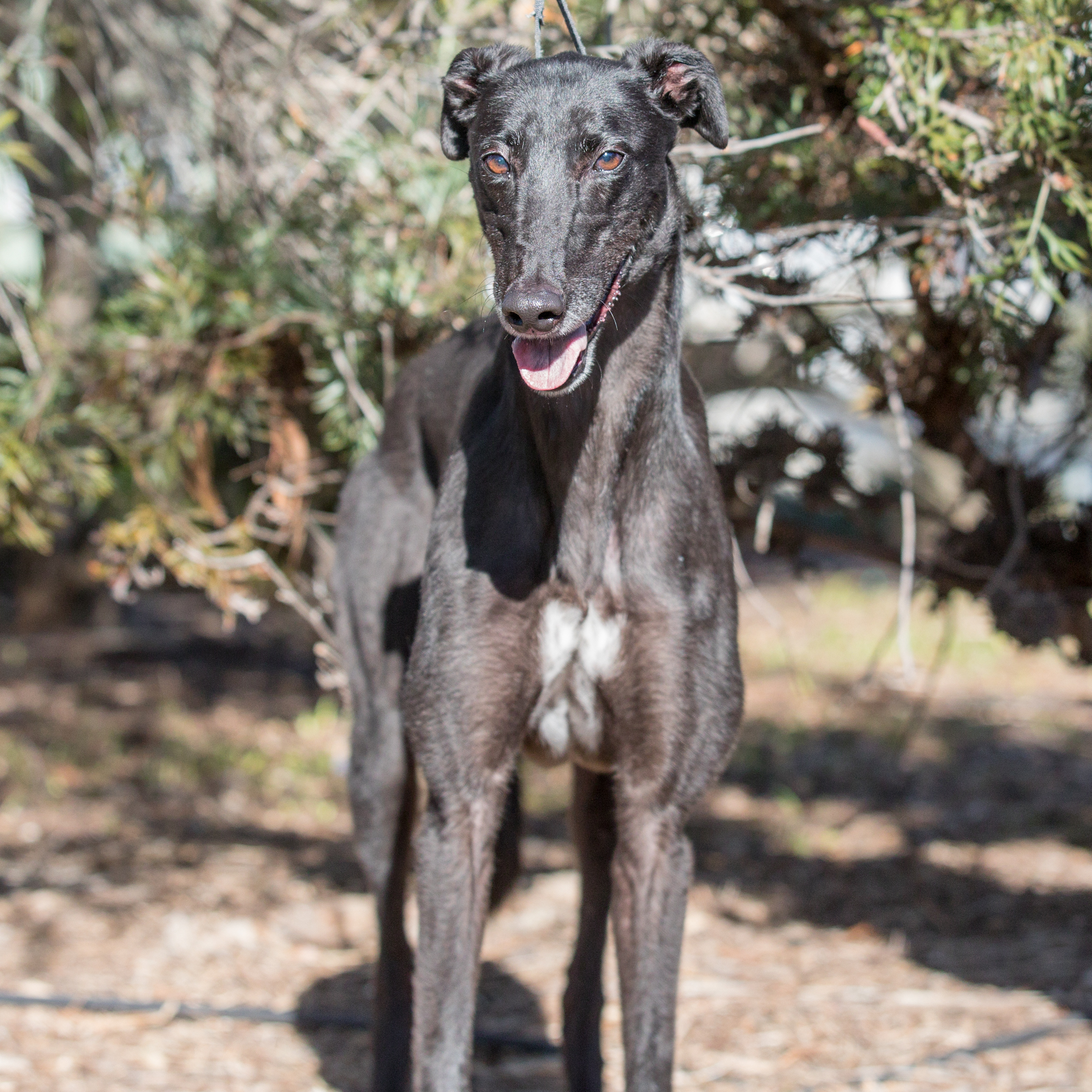
Peggy

Linguine

Norma Jae
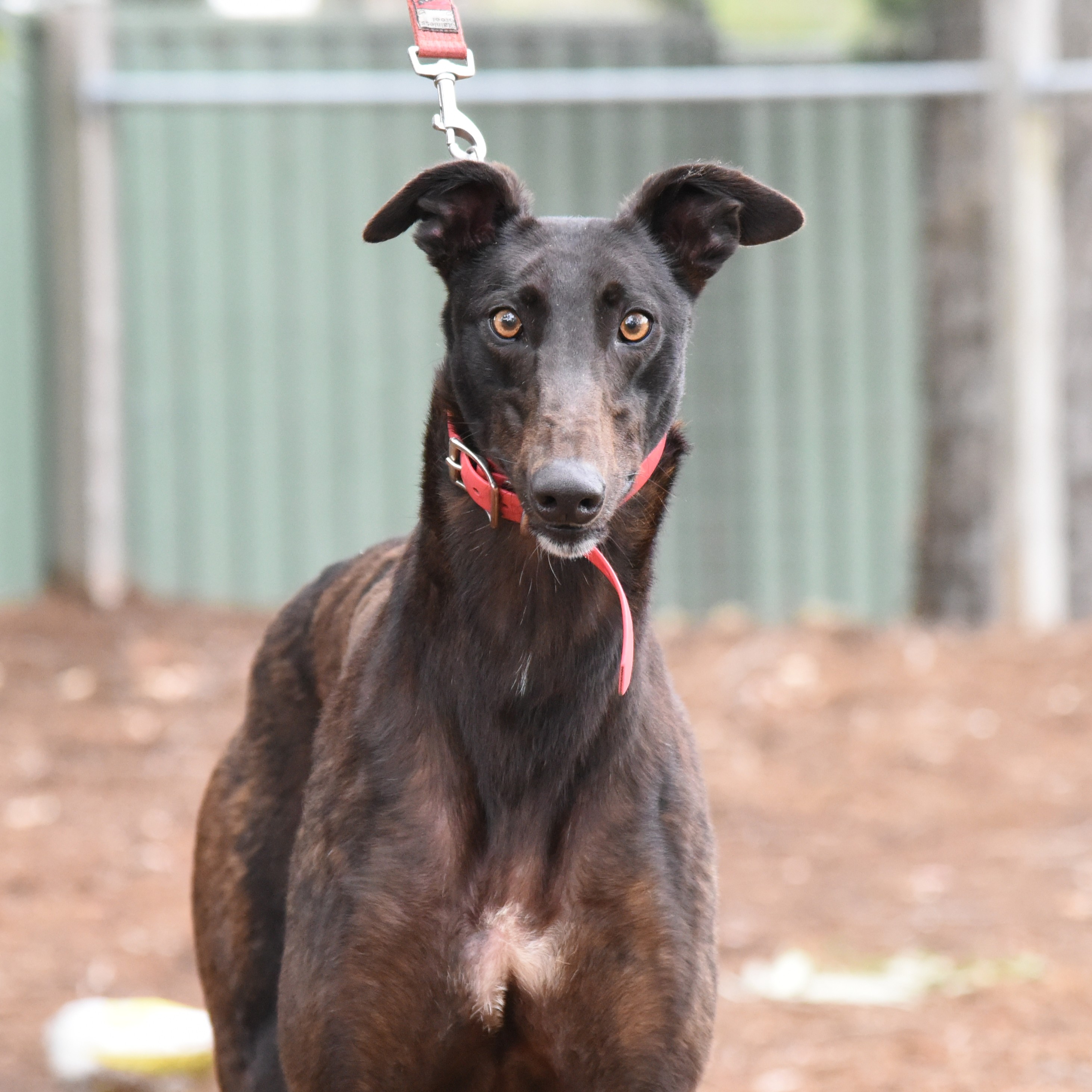
Pershing ARP
If you are looking for a smallish male greyhound, well look no further than Pershing! Pershing can act like an excitable goofy puppy upon first meeting him but then settles down and is a friendly and affectionate boy. Pershing may suit living with or without a canine pal of similar size and children aged 10 years and older. Due to his puppyish nature, he wouldn’t be suited to live in an apartment or with elderly.
This dog is part of our Assisted Rehoming Program (ARP). We have behavioural and health assessed this lovely dog, and they will remain with their racing owners until they find an adoptive home, at which point they are brought back into GAP. This means that should you be interested in adopting this dog, we are bringing the dog into GAP on the understanding that you will be adopting this particular dog, and not other dogs currently in our care.




_51505627.jpg)


.jpg)

